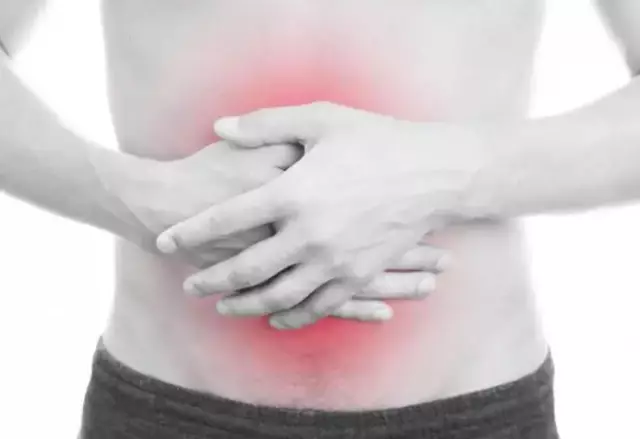- Author Rachel Wainwright [email protected].
- Public 2023-12-15 07:39.
- Last modified 2025-11-02 20:14.
Myoma of the uterus

Neoplasms that arise in the muscle tissue of the uterus are called uterine fibroids (otherwise - lemioma or fibroids). The disease is benign and manifests itself against the background of hormonal imbalance in the female body, provoked by various pathological conditions: polyps, anovulations or hyperplasia of endometrial tissue.
The size of uterine fibroids can vary significantly: from tiny (pea-sized) to tumors that reach truly gigantic sizes, when myomatous nodes increase to the volume of a full-term pregnancy and weigh more than three kilograms. The formation of uterine fibroids is also different - it can be one large neoplasm, or a whole bunch of small tumors.
Types of uterine fibroids
Experts subdivide uterine fibroids into the following types (depending on the place of formation of myomatous nodes):
- interstitial (intramural);
- subserous (subperitoneal);
- submucous (submucous);
- intraligamentary (interlinkage).
According to official data of medical statistics, in the overwhelming majority of cases, the formation of uterine fibroids is multiple in nature, that is, several myomatous nodes are formed simultaneously, different in size and location in the uterine tissue.
Causes of uterine fibroids
The opinions of modern doctors are divided about the true causes of the formation of uterine fibroids. Most experts are inclined to think about the hormonal nature of the onset of the disease and argue that it is the wrong ratio of sex hormones in the female body that is responsible for the pathological state of the endometrial structure and metabolic disorders.
The latest research in the field of research into the causes of uterine fibroids proves that the etiology of the disease is not as simple as it is traditionally described in medical reference books. The root causes of the disease today increasingly include the impact on the woman's body of psychosomatic factors - prolonged stress, depressive conditions, a feeling of hopelessness, loneliness, depression, protracted family conflicts, etc.
Also, the causes of uterine fibroids include the following pathogenic factors:
- undergone surgery to artificially terminate pregnancy (abortion);
- high blood pressure;
- obesity;
- diabetes;
- increased levels of estrogens (female sex hormones);
- lack of a full-fledged intimate life.
The main risk group for the development of uterine fibroids includes women of childbearing age, their percentage in the total number of patients with fibroids is (according to various sources) from 20 to 50 percent. After the extinction of the reproductive function in a woman, the incidence rate decreases significantly.
Symptoms of uterine fibroids

The most characteristic symptoms of uterine fibroids include pathological conditions that must necessarily attract a woman's attention - these are unexpected intermenstrual and unusually heavy menstrual bleeding.
Pain in uterine fibroids may vary in intensity and location of pain. Pain in the pelvic region, as a rule, is described by sick women as a feeling of constant distention, incomprehensible and unreasonable heaviness in the lower abdomen (a similar feeling occurs when the uterine myoma reaches large sizes and begins to squeeze the internal organs located next to it).
Neoplasms located inside the uterine cavity can project painful sensations of a cramping nature, because the muscle layer of the uterus tends to contract periodically, as if trying to push out the myoma inside.
Acute and paroxysmal pain sensations indicate a violation of the blood supply to uterine fibroids.
Painless, but rather large myomatous nodes of irregular shape, located in the midline of the abdomen and having mobility, can be easily detected with self-palpation of the abdominal cavity.
Indirect causes of uterine fibroids include abnormalities in the work of the cardiovascular system. This factor is due to the fact that with a disease of uterine myoma in the female body, latent or explicit anemia develops, i.e. there is a significant decrease in the level of hemoglobin in the blood. In a direct connection with this reason is the appearance of the syndrome of chronic fatigue, rapid fatigability, decreased performance and mood.
Increased blood loss becomes permanent and, without proper treatment, uterine fibroids take on the character of a chronic condition, which in turn causes dysfunction of hematopoiesis, blood clotting and ultimately lead to disruptions in the work of all organs and systems in the female body.
The presence of at least one of the above symptoms indicates a suspicion of uterine fibroids. Timely admission to the hospital, clinical and laboratory examination and treatment of uterine fibroids guarantees a woman complete healing and preservation of her childbearing health.
Diagnosis of uterine fibroids
The early stage of the formation of the disease is characterized by an extremely low percentage of diagnoses of uterine fibroids. Women should in no way neglect regular visits to a medical facility for a preventive gynecological examination. It is the manual (bimanual) examination that makes it possible to diagnose the nodules in the uterus at the very initial stage, when none of the above signs of the presence of the disease have yet formed and have not appeared.
For the most accurate diagnosis of uterine fibroids, a gynecologist may prescribe the following types of medical examinations:
- ultrasound procedure;
- hysteroscopy;
- colposcopy;
- cervicoscopy;
- laparoscopy;
- culdoscopy;
- X-ray examination.
Taking into account the indications, the collection of tissues of the myomatous node for histological and cytological examination (to exclude the possibility of malignancy of the neoplasm) can be assigned.
Treatment of uterine fibroids
Methods of treatment of uterine fibroids are divided into surgical and medication. The indications for a surgical operation of uterine fibroids are:
- profuse prolonged bleeding;
- developing anemia against the background of uterine fibroids;
- rapidly progressing tumor growth;
- female infertility caused by the atypical location of the myomatous node;
- uterine myoma, combined with endometriosis and ovarian tumor;
- suspicion of malignancy of the neoplasm;

- submucosal location of fibroids;
- cervical location of fibroids;
- fibroid necrosis.
The medications prescribed for the treatment of uterine fibroids include, first of all, hormonal agents - progesterone and its derivatives.
Treatment of uterine fibroids with folk remedies is effective and justified only in cases where the age of sick women exceeds 40-45 years and there is a natural decrease in the production of female sex hormones. Before starting treatment of uterine fibroids with natural remedies (herbal remedies or homeopathic methods), a preliminary consultation with a doctor is required.
YouTube video related to the article:
The information is generalized and provided for informational purposes only. At the first sign of illness, see your doctor. Self-medication is hazardous to health!






